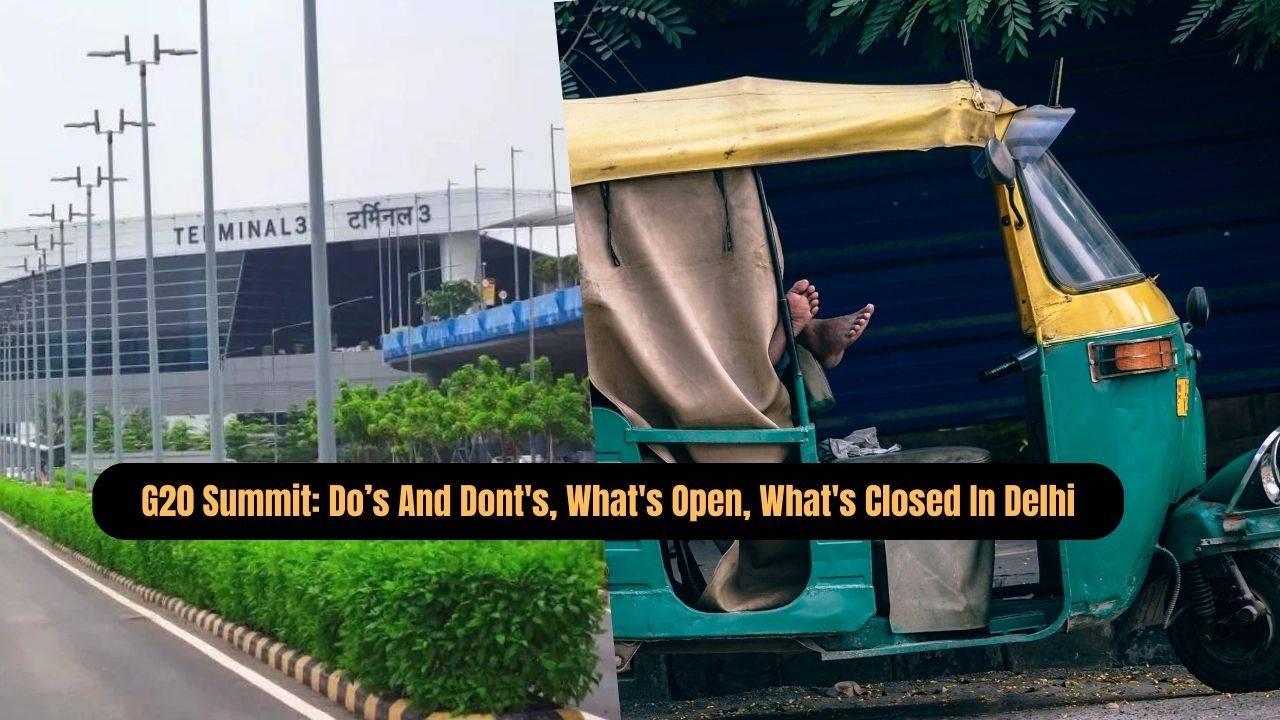
Delhi is set to host the prestigious G20 Summit, a significant global event, from September 9-10.
As the capital city prepares to welcome heads of state and dignitaries from the world's leading economies, the Delhi Traffic Police have outlined comprehensive traffic restrictions and guidelines to ensure the event's success and minimize disruptions for residents and commuters.
Restricted Area and Controlled Access
New Delhi District- The newly constructed Bharat Mandapam convention center in Pragati Maidan, New Delhi, will be the venue for the G20 Summit. As a security measure, entry and exit to this district will be regulated, starting from the night of September 7.
Restricted Establishments- All establishments, including offices, restaurants, malls, and markets, within the New Delhi area will remain closed from September 8. This closure includes the Supreme Court.
Access for Residents- People residing within the area will be allowed entry and exit, facilitated through proper identity verification. However, those coming from outside will require special passes for access.
Traffic Management and Vehicle Diversion
Traffic Diversions- Non-essential vehicles will be rerouted to Eastern and Western Peripheral Expressways and alternate routes. Entry into Delhi will be restricted for these vehicles to ensure smooth traffic flow within the city.
Goods Vehicles- With the exception of essential commodities such as milk, vegetables, fruits, and medical supplies, heavy and light goods vehicles will not be permitted to enter Delhi.
Public Transport and Emergency Services
Metro and Bus Services- Despite restrictions, metro and bus services will continue to operate, albeit with limitations. Special provisions will be made for medical emergency vehicles, ensuring seamless access to healthcare facilities during the summit.
Ambulance Control Room- A dedicated ambulance assistance control room will be operational from midnight on September 7 to 11:59 pm on September 11, ensuring prompt emergency responses.
Rickshaws, Taxis, and Buses
Rickshaws and Taxis- Three-seater rickshaws (TSRs) and taxis will be permitted to operate outside the New Delhi District. Tourist taxis can enter the district with valid hotel bookings. Residents, authorized vehicles, and essential service providers need to carry valid identification documents.
Buses- Buses currently in Delhi will follow specified routes, primarily along the Ring Road and beyond, to exit the city.
Access to Airports and Railway Stations
Airport and Railway Passengers- The Delhi Traffic Police will facilitate the movement of passengers to and from the airport, New Delhi Railway Station, and Old Delhi Railway Station. Suggested routes and early planning are advised to ensure timely arrivals and departures.
Metro Recommendations- Passengers are encouraged to use the Metro for commuting between September 8 and 10, minimizing road congestion.
Suggested Alternate Routes
North-South Corridor- Alternate routes include Ring Road, Ashram Chowk, Sarai Kale Khan, Delhi-Meerut Expressway, Noida Link Road, and more.
East-West Corridor- Routes such as Sun Dial/DND Flyover, Ring Road, Ashram Chowk, and Dhaula Kuan are suggested to avoid regulated zones.
Metro Service and Restrictions
Operational Metro Stations- Most metro stations will remain operational throughout the summit period. However, boarding and de-boarding will be prohibited at Supreme Court Metro Station from 5 am on September 9 to 11 pm on September 10.
Airport Travel Recommendations
Airport Access- Passengers traveling to Indira Gandhi International (IGI) Airport should consider using the Metro, especially the Airport Express Line (Orange Line), which connects New Delhi Station to Dwarka Sector 21 Station via IGI Airport Terminal 3 (T3).
For detailed route information, updates, and specific guidelines, individuals are advised to refer to the official Delhi Traffic Police website and communication channels. These measures aim to ensure the successful execution of the G20 Summit while minimizing disruptions and inconveniences for the people of Delhi.
















